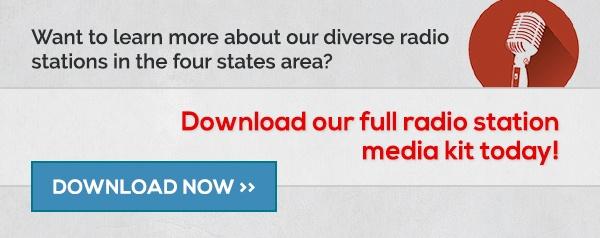%20(1).jpg?width=520&name=iStock-497487570%20(1)%20(1).jpg) It’s easy to underestimate the power of audio in the way we feel, think, and even make decisions. Understanding this impact in radio can be traced back to the mid-1950s when the burgeoning television industry first posed a serious challenge. While it was uttered with regard to radio dramas, the phrase that best sums up this power is “Theater of the Mind.” Essentially, the reason why audio is powerful is because of all the mental images, associations, and emotions that it can evoke, especially through radio.
It’s easy to underestimate the power of audio in the way we feel, think, and even make decisions. Understanding this impact in radio can be traced back to the mid-1950s when the burgeoning television industry first posed a serious challenge. While it was uttered with regard to radio dramas, the phrase that best sums up this power is “Theater of the Mind.” Essentially, the reason why audio is powerful is because of all the mental images, associations, and emotions that it can evoke, especially through radio.
In today’s article, we’ll do an overview of why this works and how you can carry this into the power of radio advertising.
The Impact of Sound
Sound is an extremely influential factor in our lives, both on a subconscious, passive level, and an overt, active level. Of all the tasks people complete throughout the day, 70% to 80% is communication, and of that, 45% is spent on listening (as opposed to a mere 16% reading). Of course, in the modern world filled with all sorts of distractions, it’s thought that people only remember about 20% of what they hear (as opposed to only 10% of what is read), although some believe memory retention is as high as 50% immediately after listening, which drops by half after 48 hours. These studies deal with lectures in classrooms, which tend to be missing a critical component to advertising — emotion.
Sound is actually a shortcut to our emotions, to a very deep and fundamental part of our minds. Emotions are a key part of how humans both perceive and deal with reality, and humans probably evolved an emotional reaction to sound in relation to survival, but now extends into all levels of emotion, which in turn impacts memory encoding and recall. This is where the power of radio advertising is hidden.
The Impact on Advertising
Listeners are regularly bombarded by advertisements, and how you leverage audio is key to helping capture their attention. Often, the sounds you use to capture their attention will also help listeners remember your brand. Perhaps the most obvious example is the jingle, but even the sound effects and music you use will make a difference. For example, one neuroscience study showed that memory encoding was higher for radio than TV on key brand communication points, sometimes by as much as 220%. That study utilized one radio trailer and one TV trailer for the movie Expendables 3, where the branding isn’t as straightforward as a familiar jingle and brand name.
Perhaps most importantly, audio has a huge influence on how listeners perceive your brand. This works in two ways, the first of which is trust. Some 38% of listeners feel that a radio advertiser is a trustworthy advertiser, and radio can improve loyalty and shopper retention by 11%. This is elevated if you can involve radio personalities: 70% of listeners view these personalities like friends and trust their opinions. Secondly, brand perception can be deeply defined by sound. Even simply approaching the soundtrack from a positive or negative point of view can directly impact how listeners will feel about your brand. This can be much more nuanced, making a brand, or product or service seem enthusiastic and daring, somber, or disciplined and mature.
Use Radio to Optimize Use of Sound
It would be foolish not to leverage this knowledge to benefit your bottom line. The impacts are easily seen in terms of ROI: for every dollar spent, the average lift in sales from radio ads is $6, and 73% of consumers attribute radio as a major influence in their purchase decisions. In fact, 41% of listeners (12+) will visit a brick-and-mortar location after hearing a radio ad, and another 28% visit the advertiser’s website. To ensure you see results this successful, you need to understand the power of audio and carefully craft a sound strategy to utilize it in your marketing plan. You need to know the right emotional notes to include to connect with and move a customer on a deeper level, along with solidifying your brand in their memory.
Now that you understand why audio is powerful, you can fully appreciate the power of radio advertising. Radio can be a critical touchpoint for your target audience, providing the emotional resonance and frequency to capture attention, improve brand recognition, and lift recall in a way that brings your business results. Now is the time to review your 2017 marketing plan to determine when and how to best integrate radio into your marketing mix.

